Soapstone Countertops: Everything You Need to Know
Soapstone countertops have become a popular choice for homeowners in recent years. But what are soapstone countertops, and why are they so popular?
The stone is metamorphic, similar to marble, and is made primarily of talc. It has a unique look and feel that makes it a popular choice for kitchen countertops.
Soapstone is a great choice for homeowners who don’t mind a little maintenance in exchange for a durable and easy-to-clean countertop material.
In this blog post, we explore everything you need to know about soapstone countertops.
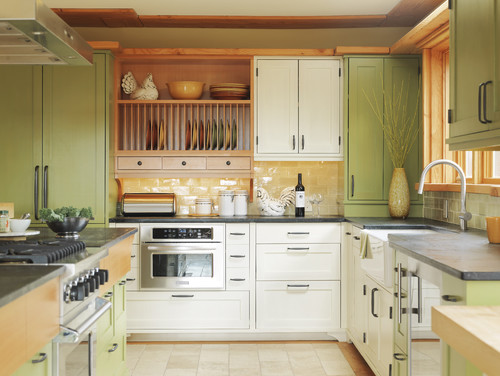
What is soapstone?
Soapstone is a type of metamorphic rock that is quarried in India, Brazil, Finland, the U.S., and several other countries.
The rock is primarily made of talc, which gives soapstone its characteristic soft, soapy feel. This unique look and feel makes it a popular choice for kitchen countertops.
Science labs (and classes) often use soapstone because it is non-porous, does not absorb liquids or bacteria, and nothing will react to it. If you remember the black countertops in your high school science classes, you remember soapstone. Cooking is also a science, so using soapstone as a countertop material makes a lot of sense in the kitchen!

Which design styles will soapstone counters work with?
Soapstone countertops are a versatile option that can work with many different design styles.
They have a unique look that can add character to any kitchen.
Soapstone can be a lovely addition to farmhouse kitchens, transitional kitchens, and modern kitchens since it is such a versatile material.
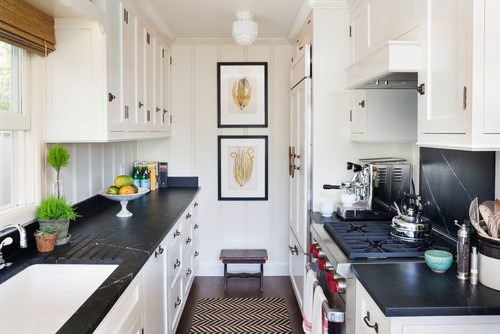
How much do soapstone countertops cost?
Soapstone countertops are a mid-range option, ranging in price from $70-$120 per square foot (materials only), depending on the quality of the soapstone.
To compare, the cost per square foot of granite countertops ranges from $40-$100, while the cost per square foot of marble countertops is $40-$180.
Concrete counters will run $65-$135 per square foot, and quartz counters cost an average of $70-$100 per square foot.
Laminate comes in at $10-$40 per square foot.
Keep in mind that none of these include installation/labor costs.
Soapstone falls in the middle of all of these materials in terms of price.
How much your soapstone countertops cost will also depend on whether you choose to install them yourself or hire a professional.
Costs will also rise if you need to have custom soapstone countertops made.
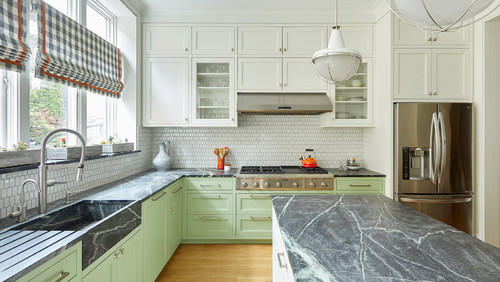
What are the different colors and finishes of soapstone countertops?
Colors
Soapstone is available in a limited range of colors. The most popular soapstone countertop color is greenish-gray.
Soapstone can generally be found in varying shades of grey, blue, and black, and it tends to darken over time. Soapstone does not come in white, though you can occasionally find it in a light grey.
If you have white cabinets, soapstone is a really stunning pick!
Finishes
There are three different finishes for soapstone countertops: honed, polished, and antique.
Polished soapstone is shiny and has a glass-like appearance. This finish is more difficult to maintain since it shows scratches and water spots more easily.
Antique soapstone has a distressed finish that gives the countertop a unique look. People who choose this finish often do so because they want their soapstone countertop to have a more rustic appearance.
Honed soapstone has a matte finish and a softer appearance. It is the most popular soapstone finish since it is easy to maintain and hides imperfections well.
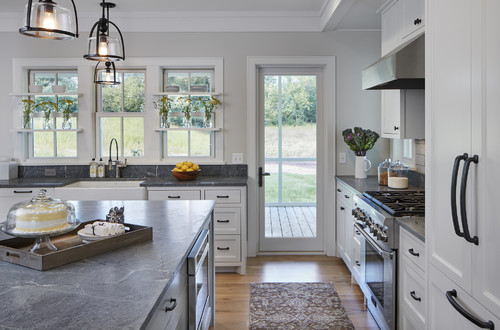
Pros and cons of soapstone countertops
Now that you know a little more about soapstone countertops, let’s explore the pros and cons of this popular material.
Pros
- Soapstone is a durable material that is generally stain-resistant. Even acids like vinegar and lemon juice will not degrade your soapstone.
- You can place hot pots and pans directly on soapstone without damaging the countertop. Truly. The fact that soapstone is heat-resistant makes it a great choice for kitchens.
- Counters made of soapstone are non-porous, meaning they will not absorb liquids or bacteria. This also means that soapstone does not require sealing.
- Soapstone is a unique material that adds character to any kitchen.
- It is easy to repair chips and scratches in soapstone by sanding them with a piece of 80-grit sandpaper. Follow up your sanding by reoiling the countertop.
- This versatile material can be successfully used in many different design styles.
- Soapstone countertops are a mid-range option that is more affordable than granite or marble.
- Environmentally friendly soapstone is a sustainable material not manufactured using synthetic chemicals. Extracting soapstone does not cause damage to the earth. Plus, soapstone can be recycled.
- Works well as a period detail. Soapstone counters were used in old farmhouses as work surfaces because soapstone is durable and resists staining.
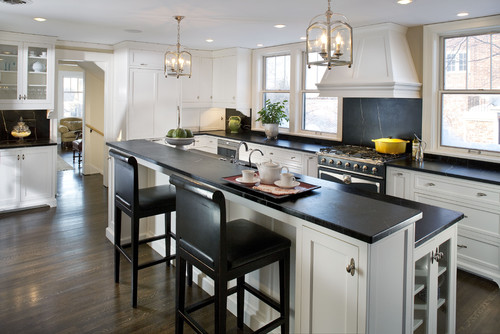
Cons
- Soapstone is a soft material that can scratch and dent quite easily.
- The cost of soapstone countertops can be a deterrent for some homeowners. Soapstone is generally more expensive than quartz or granite, though less costly than marble.
- Color options for soapstone are limited, especially when compared to other available countertop materials.
- Soapstone can chip around the edges.
- Spilling an oily substance on soapstone can leave a permanent mark.
- Soapstone countertops need to be oiled regularly to keep them looking their best.
- If you make bread and knead it on your counter, the soapstone will absorb oil from the dough, creating darker spots.
- Difficult to find in longer lengths, soapstone countertops are usually only available in slabs that are six feet long or shorter.
- Age and wear can give soapstone a significant patina. While some homeowners appreciate this look, others do not.
- Oiling soapstone can give it a darker (though more uniform) appearance and a somewhat leathery feeling that will never go away. If you are likely to be bothered by this, oiling your soapstone may not be the best plan.
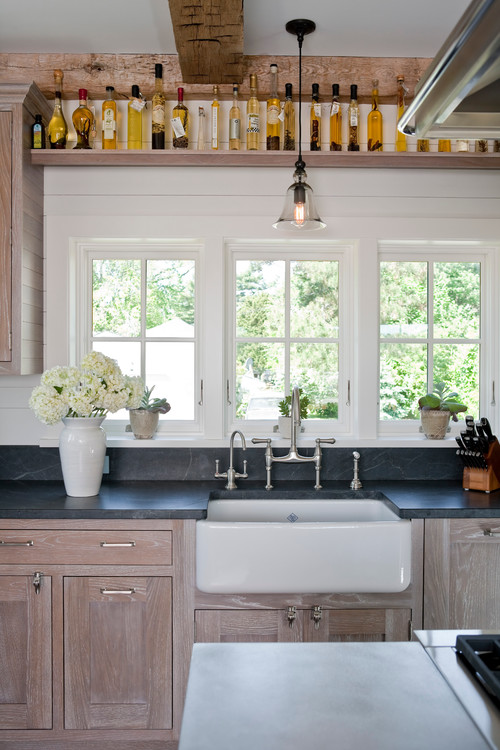
Maintaining soapstone counters
You will need to oil soapstone countertops every four to six weeks, using a natural oil like mineral oil. You can purchase mineral oil at your local hardware store.
As we mentioned earlier, the original color of soapstone is nearly always a subdued gray, gray-blue, or gray-green with white veins and swirls. If you use mineral oil on your soapstone counter, it will darken almost instantaneously, becoming a color that is much closer to black; some slabs will turn a rich, deep green.
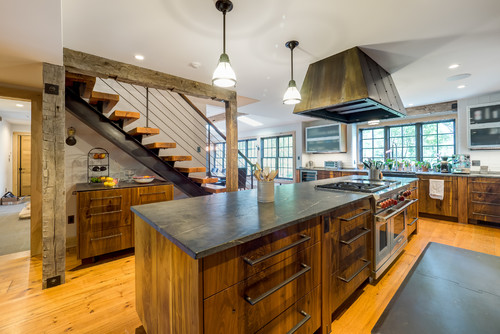
Some people choose not to oil soapstone at all, allowing it to age naturally over time. If you choose this route, soapstone will darken to a charcoal color with white veins.
You can also use soapstone wax to give your countertop a high-gloss finish.
To clean soapstone, use a mild soap and warm water. You can also use a commercial stone cleaner.
Avoid using any harsh chemicals or abrasive cleaners, as they will damage soapstone.
Why choose soapstone countertops?
Soapstone countertops are a beautiful and unique addition to any kitchen. Soapstone is a sustainable material that is easy to care for and maintain.
It is also a heat-resistant material, making it ideal for use in the kitchen. While soapstone countertops may require some regular maintenance, the beauty and durability of soapstone can make it a wise investment for any homeowner.
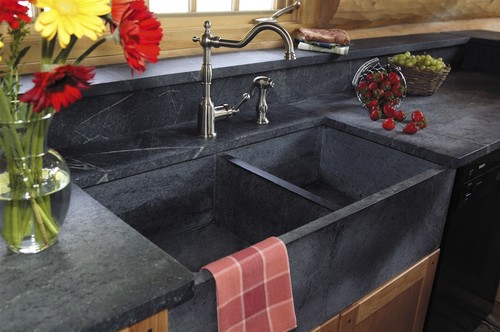
Why NOT to choose soapstone countertops?
If you are looking for a no-maintenance countertop option, soapstone may not be the best choice. Soapstone requires regular oiling to maintain its beauty. It can also be scratched and chipped quite easily.
Imperfections in soapstone can become more pronounced over time. So if you know that you will be bothered by marks or patina, soapstone may not be the best countertop material for you.
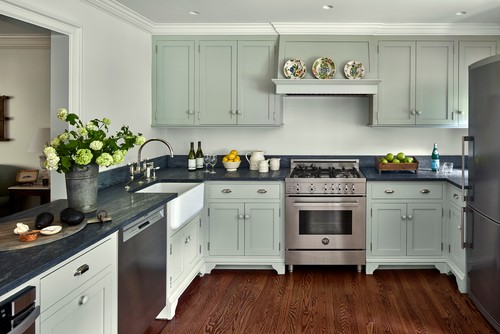
The Verdict
If you are looking for a unique, durable, and low-maintenance countertop option, soapstone may be a good choice for you. Soapstone is a sustainable material that is eco-friendly, heat-resistant, and relatively easy to care for. It also lends a casual vibe to your kitchen.
However, soapstone countertops can be expensive, absorb oil, and damage easily. And imperfections can become more pronounced over time. Soapstone does not look like quartz. It is informal and imperfect. So if you are seeking a shiny, perfect countertop, this isn’t your best option.
Weigh the pros and cons of soapstone countertops to determine if they are the right material for your kitchen. And it’s always a good idea to consult with a soapstone rep before making your final decision.
Do you have soapstone counters? Do you love them or regret them? Let us know in the comments!
If you enjoyed this article, you may also like:
2 comments
Comments are closed.